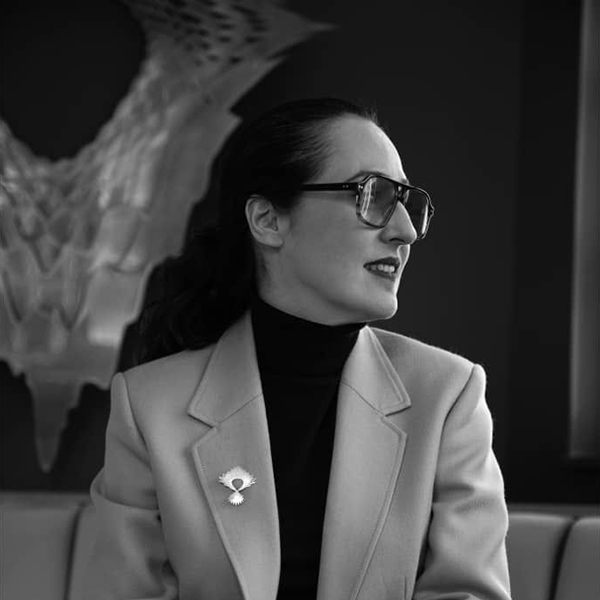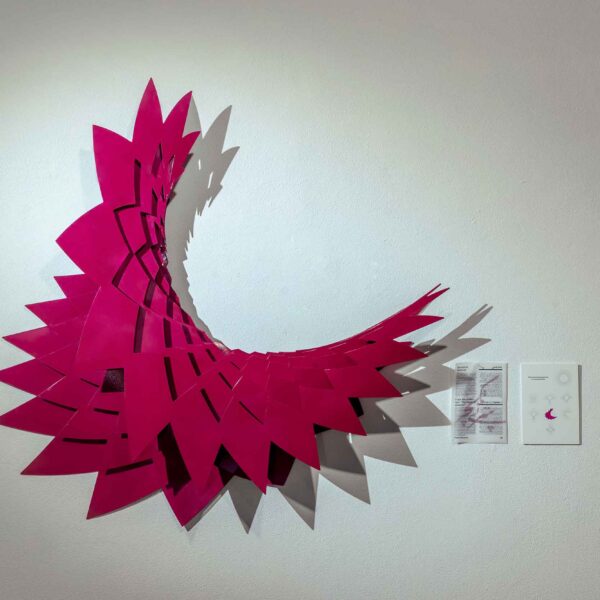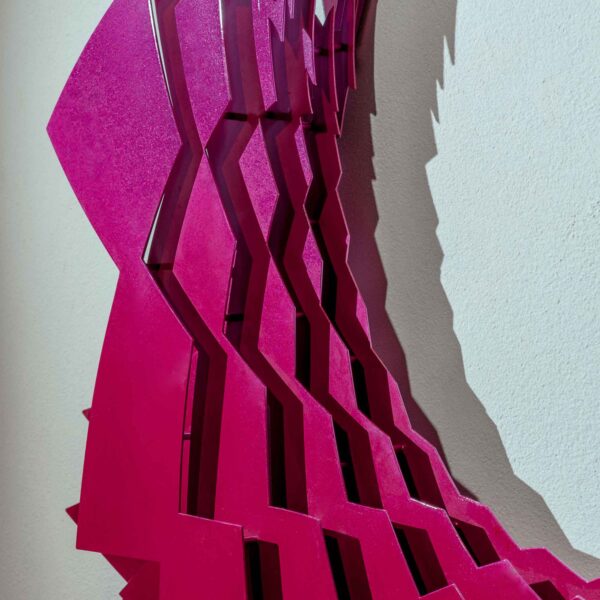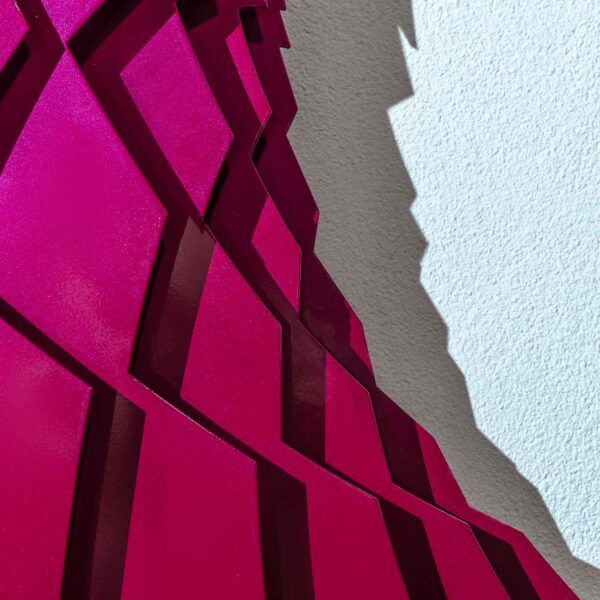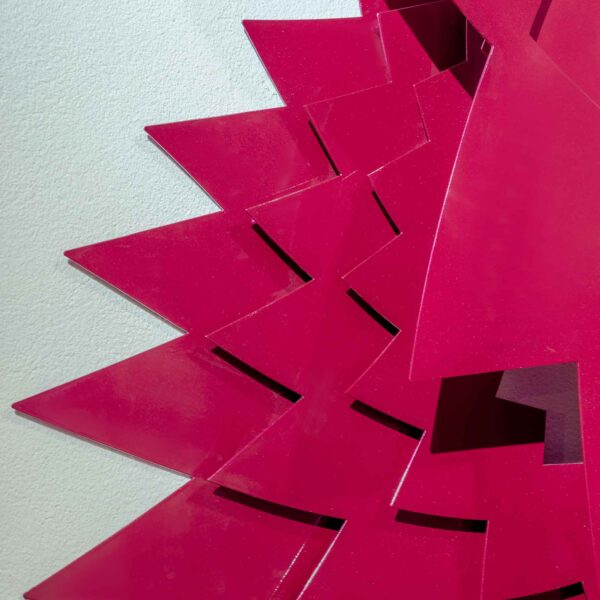Banafsheh Hemmati, an Iranian designer-artist, is a master’s graduate in industrial design and a PhD graduate in the philosophy of art who’s concerned with the relation between art and geometry in her works. She’s founded Banafsheh Hemmati Design Studio in Tehran for more than twenty years and her extensive pursuits in the field of design involve interior, furniture, light, and custom design, and specializing in jewelry, and sculpture. She’s also been teaching design at universities. Her approach in her pieces of jewelry and sculptures can be best described as appropriating Islamic geometry. She strives to desacralize the sanctity of Islamic architecture and secularize its geometry.
Hemmati has shown her works in numerous exhibitions in Iran and abroad. She is the only independent artist at DIFC and recently her installation entitled, “Seven Cypresses,” was showcased in the first near east “Sculpture Park” at DIFC besides artworks from Salvador Dalí and Jeff Koons. She has also attended various festivals as a judge and gained prestigious awards such as the “Florence International Art and Design Competition Award”. Hemmati has been a member of Klimt02 (a platform for the communication of international art jewelry and contemporary crafts) and an author in the Art Jewelry Forum (AJF).

